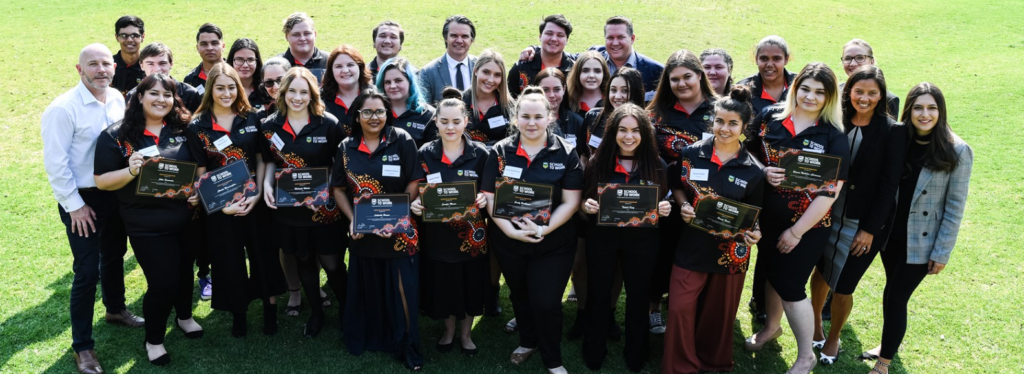The NRL School to Work program is continuing to kick major goals in Indigenous employment and education, supporting over three thousand First Nations students since launching in 2012.
With Indigenous youth historically failing to find employment or training pathway six months after leaving school and having a significantly higher chance of being unemployed long term, the School to Work program supports young Indigenous Australians with work experience, mentoring and leadership opportunities to ensure they successfully complete school and transition into further study or employment.
This year, School to Work students from around the Greater Sydney District participated in the NRL Content Team Grand Final Week Internship Program, shadowing NRL journalists, photographers and social media managers in creating content ahead of the 2022 NRL Grand Final.
After supporting 3,400 young people since 2012, School to Work Program Manager Luwis Fernando said the program continues to ‘Close the Gap’ employment outcomes between Indigenous and non-Indigenous Australians .
“Especially when it comes to the involvement with the First Nations Peoples, they really look up to a lot of the First Nation players and we do get a lot of support from high-profile players come and inspire the youth,” Fernando said.
“Through the brand of the NRL, we can also unlock all sorts of opportunities and open the door for us to connect with schools in particular and we then we can recruit high school students to assist them with the transition to the workforce.”
“Our placement retention is hovering around the mid-90s. And I think that’s because we don’t place a young person on what we think. It’s all based on the aspirations of the individual,” he added.
“For example, if someone wanted to work in the digital or content space we would only look for opportunities in media so that’s why the retention rate is so high.”
“Once we place them, we still mentor them for six months and then we make sure they’re supported and communicate between the employers and the student when they need.”
Despite the program already taking huge strides since its launch in 2012, Fernando said School to Work has a bright future ahead with some key goals to achieve.
“As a brand, we have a huge potential to expand our program across regional Australia,” he said.
“Currently we only operate within the eastern seaboard around the club catchments.”
“But if we think about areas where First Nation communities don’t have many resources but still follow the game, we can utilise the brand to reach out to other areas. We can even run programs online.”
“First Nations young people do tend to miss out because they don’t tend to live in big cities. So the regions are an area that we haven’t even tapped into yet.”
This article is courtesy of NRL and journalist Kelsey Hogan to read the original article go here
